Anytime we travel, we make sure to carve out space in our itinerary for a road trip. It doesn’t matter if it’s just for a few hours or a whole day—venturing beyond the typical tourist spots brings out the essence of a place. It’s in these detours that we catch glimpses of local culture, meet warm-hearted people, and savor authentic cuisine that never makes it to the glossy travel brochures. Our road trips through the Yucatán Peninsula, the sun-soaked coasts of the Dominican Republic, the jaw-dropping landscapes of Switzerland, the rolling hills of Germany, and the varied terrain of Spain have given us the most spectacular views and unforgettable stories. Plus, there’s nothing quite like practicing my newly learned Spanish words while chatting with the locals over a roadside snack. I wish I learned at least the basics of the language before venturing to explore- reminder for next time

This time it was no different. Our initial plan was simple: visit Barcelona and move on. But then Paulo Coelho and Washington Irving are to blame – we heard the call of Andalucía – with its vibrant flamenco, Alhambra’s and its intricate Moorish architecture, and sunlit olive groves—was too strong to ignore. So, we added a road trip from Barcelona through eastern Spain, covering Valencia and continuing all the way to Granada. Nothing can beat the idea of taking our time, journeying through the less-traveled local roads, and making spontaneous stops at charming small towns.
Car Rental
We rented the car from Europcar. The process was pretty straight forward as we did the booking before we started the trip from Chicago. Watch out for speed checks everywhere.
Porta Ventura, Tarragona
PortAventura World is a theme park similar to Six Flags in the US. It includes a resort complex located in Salou, near Tarragona, Spain. The renowned Ferrari Land is also part of the complex. This place is not necessarily a must-visit unless you have kids who enjoy roller coasters, in which case, it might be worth a visit. Otherwise, you can skip it altogether. We decided to include the place in our itinerary due to a work event that we had to attend. The resort has a typical layout, complete with various children’s activities.
Other than the rides and activities, one thing that caught our attention was the local flora in the area. The roadsides were lined with orange and pomegranate trees. No one seemed to be paying attention to or harvesting these pomegranates, but coming from the cold tundra of Chicago, I was captivated by the sight of the beautiful fruit trees lining the roads.
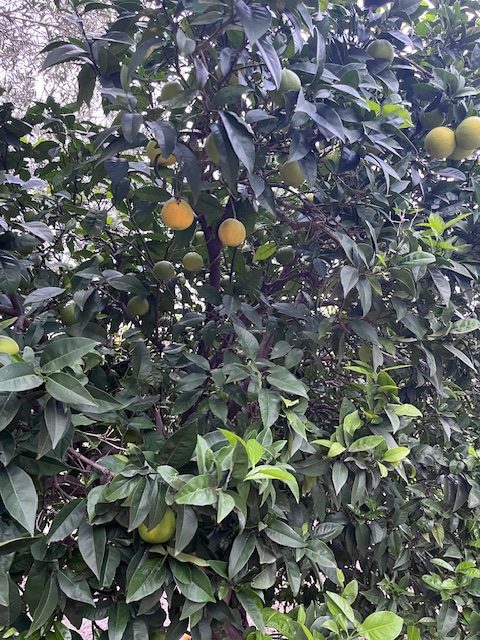
Tarragona to Valencia
The landscape in the east of Spain is mostly flat, with mountains on one side and the Mediterranean Sea on the other. The area appears really dry, with white sandstone formations and small bushes, but since our trip was in October, it was also somewhat chilly. We navigated between the highway and local roads. Many forts and historic buildings can be seen along the shoreline. If I had to make a comparison to the US mainland, the landscape resembles the drive up through Southern California. We took a few detours off the highway before reaching our next overnight destination, Valencia.
Valencia
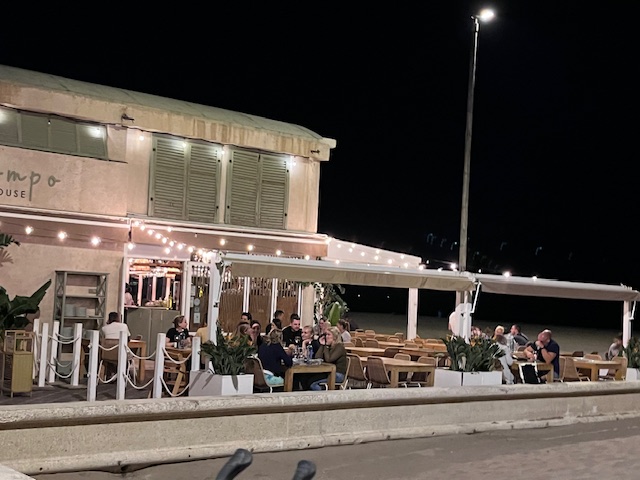
One of the main reasons we included Valencia in our itinerary was my love for paella. Seafood paella is the one dish I crave all the time, and where better to eat it than in the place where it originated—right in Valencia?
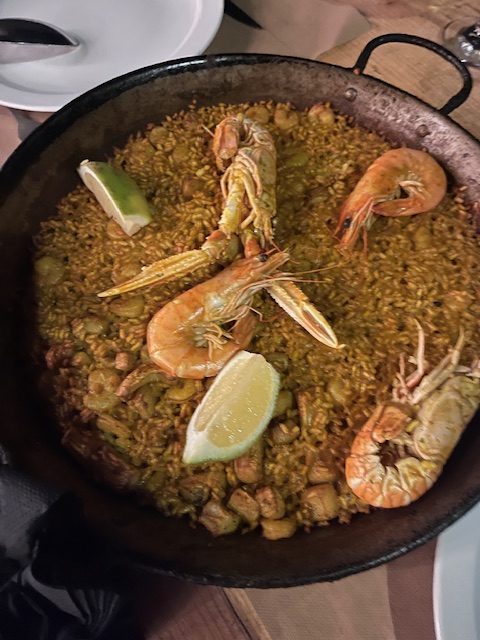
Paella is a rice dish with saffron, similar to a mild Indian biryani but without the heavy spices. Traditionally, the earliest versions of paella were made with ingredients readily available in the countryside, such as rabbit, chicken, snails, and various beans, along with olive oil and saffron. The dish is traditionally cooked over an open flame using orange tree wood. The Valencia version has more seafood due to its proximity to the Mediterranean, so you can find shrimp, squid, and all kinds of shellfish in the dish.
Our first stop was to try the most authentic paella in Valencia. Before reaching the city, we spent the evening at Malvarrosa Beach, north of Valencia. The area is a long stretch of beach next to the Mediterranean Sea, packed with many seafood restaurants. We chose a place with the best view of the Mediterranean. One thing to note is that throughout Spain, people enjoy staying up late and spending a long time at the dinner table, sipping wine for hours. Altogether, it was a very relaxed and beautiful night—sitting next to the Mediterranean Sea, sipping wine, and eating paella.
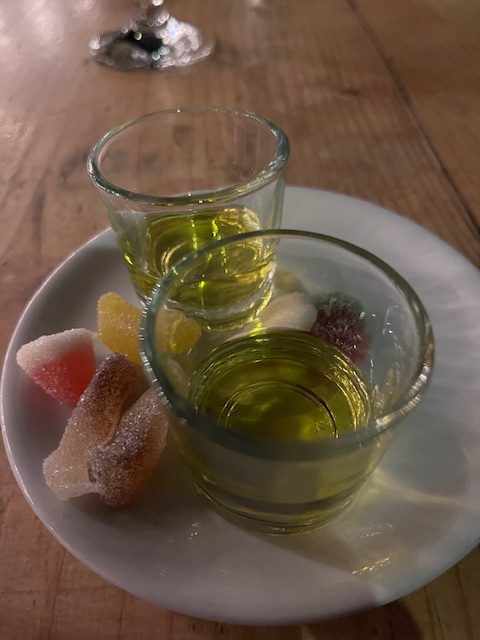
Remember to try the ouzo from that area. It’s a local alcoholic drink flavored with anise and spices. It tastes like a lighter version of absinthe and pairs well with seafood paella. I really loved it and have been on the hunt for it here in Chicago.
After a midnight stroll along the lively beach, we headed to our hotel for the night, the Estimar Marina Farnals. The place is north of Valencia and away from the city. We had a room with a view of the Mediterranean and wished we could have stayed a few days in that beautiful location.
The next day, we traveled to Valencia. We did not spend much time in the city—after seeing all the historic buildings in Barcelona, we were tired of cityscapes and too exhausted to walk. It felt like another beautiful city worth revisiting in a few years when we have more time.

It was heartbreaking to hear about the flash floods in the region just a few weeks after our trip in October. Our prayers go out to the families who lost their loved ones. We hope this beautiful area is restored to its former glory soon.
Soon after, we headed down to our final destination, Granada.
Road trip to Granada
We mostly took mountain roads and stopped at several small towns along the way. The landscape becomes increasingly mountainous as you approach the Sierra Nevada mountains. The roads are lined on both sides with vast farms of olives, oranges, and peaches. We saw small towns with the names of popular Valencian wines we buy at home—a happy surprise to actually see where they originate. The area closer to Granada looks more and more cavernous, similar to California’s coast.
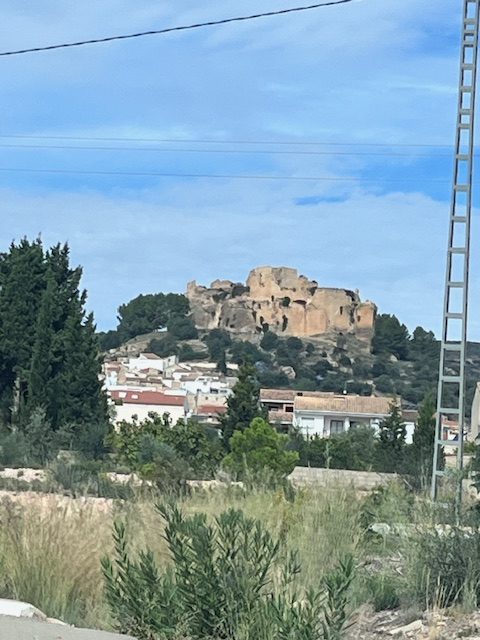
One surprising thing to note is the stunning forts on top of many of the mountains in the area. I later read that these are remnants of Moorish history, where they built forts as military strongholds during battles with the Christians in the Reconquista. We made it a point to drive around a few of them.

Another noteworthy sight during the drive is the cave dwellings and mines high up in the mountains. They all seemed abandoned, although we tried to get closer for a better look.
On the way, look out for towns like El Turro, where the natural, mosaic-like stones used in the construction of St. Charles’s Palace in Granada were mined, Alicante, the famous wine-producing region of Valencia, and Málaga, the birthplace of Picasso.
Moros y Cristianos
The best of our trip to Spain was witnessing the festival of Moros y Christianos during our road trip. It was completely unplanned and breath taking. More about it here
Next stop: Granada